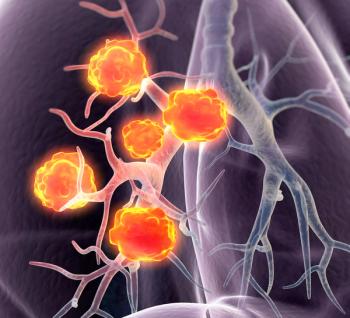
- ONCOLOGY Vol 10 No 12
- Volume 10
- Issue 12
New Study Proves Benefits of Antiseptic-Impregnated Catheters
Using antiseptic-impregnated catheters reduces the risk of catheter-related infection, according to a study authored by Dr. Joseph Civetta in the October 1996 issue of Critical Care Medicine.
Using antiseptic-impregnated catheters reduces the risk of catheter-relatedinfection, according to a study authored by Dr. Joseph Civettain the October 1996 issue of Critical Care Medicine.
In the study, performed at the University of Miami School of Medicine,Dr. Civetta and his team devised a management protocol of centralvenous catheterization. Using ARROWg+ard Blue catheters (ArrowInternational, Reading, Pennsylvania), catheters impregnated withsilver sulfadiazine and chlorhexedine, the research team was ableto reduce their trauma intensive care unit rate of catheter-relatedinfection from 15% to 6%.
In addition to the impact of ARROWg+ard Blue catheters, the indicationsfor guidewire exchange were also studied. Changes in both theguidelines and indications for guidewire exchange were implemented.One change was the substitution of "suspected catheter-relatedsepsis" for fever as an indication for exchange. In addition,the "safe" period (the time before considering changingof a catheter because catheter-related sepsis was suspected) wasextended from 2 to 4 days. These changes resulted in the eliminationof 40% of guidewire exchanges, associated with a decreased catheter-relatedinfection rate. Thus, unnecessary changes were eliminated. Accordingto Dr. Civetta, the increase in the "safe" period ofcatheter use was possible due mostly to the use of the antiseptic-impregnatedcatheters.
By using the ARROWg+ard Blue catheters in conjunction with changesin the guidelines and indications for guidewire exchange, costsavings were estimated to be $190 per patient and $4,750 per monthto the hospital.
Articles in this issue
about 29 years ago
Study Links Sex Hormones to Childhood Cancerabout 29 years ago
Scientists Confirm Natural Resistance to HIV-1about 29 years ago
Breast Cancer Incidence and Mortality--United States, 1992about 29 years ago
IOM Undertakes Study of Cancer and MinoritiesNewsletter
Stay up to date on recent advances in the multidisciplinary approach to cancer.

















































































